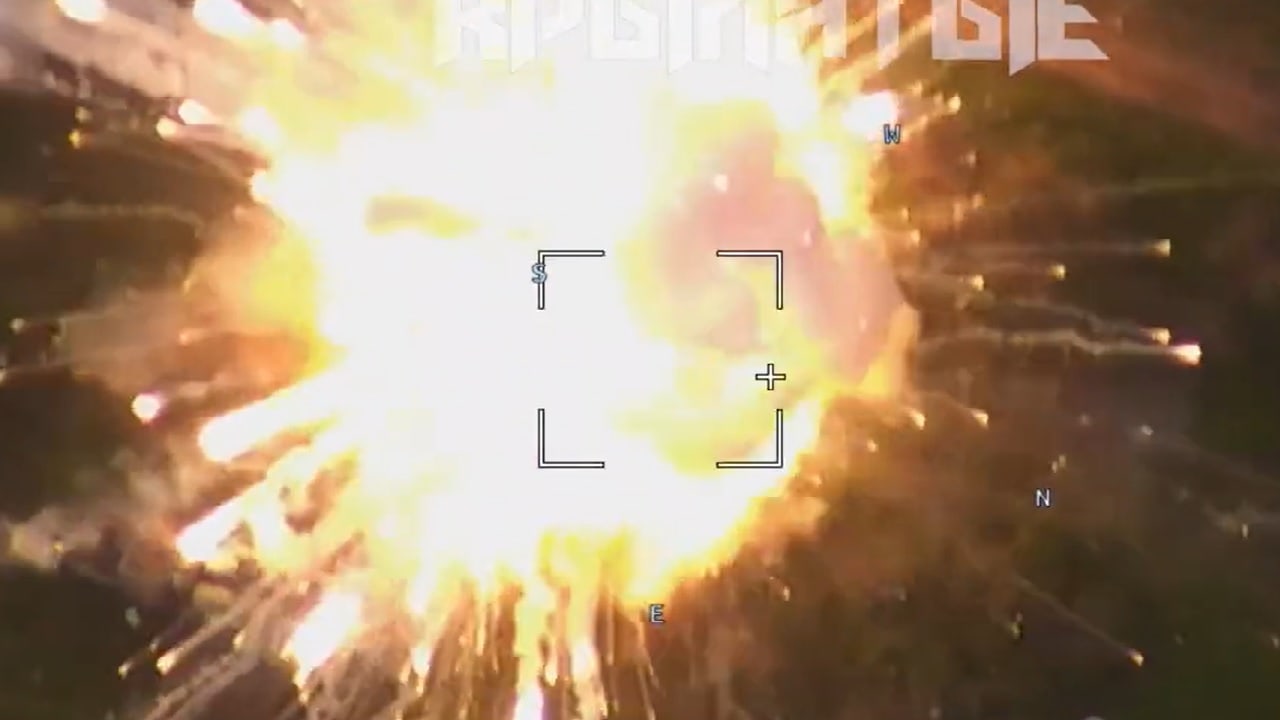The Lancet loitering munition has proven to be among Russia’s few success stories in its war in Ukraine.
While the Kremlin’s main battle tanks (MBTs) and its advanced aircraft have failed to deliver on their touted capabilities, and Moscow even saw its Black Sea flagship sunk last year, Russian forces are holding their own in the drone war.
The Kremlin has also used these videos as propaganda tools – much like Ukraine’s own military – to highlight its successes.
Annihilated Missiles: War Footage From Ukraine Shows Savage Drone Attack
In a video shared on social media this week, a Ukrainian Strela-10 short-range air defense system was seen targeted near the settlement of Avdiivka in the Donetsk Oblast.
The 19-second-long clip, which was posted by Ukraine Weapons Tracker (@UAWeapons), hasn’t been independently verified but it does appear that the air defense system was destroyed in the attack.
Serious Threat
The ZALA Lancet has been deployed to gather intelligence, conduct reconnaissance missions, and even to support ground operations. It was also reported earlier this month that the Lancet has played a crucial role in blunting Ukraine’s counteroffensive.
“Earlier, in spring, they were not using Lancets as often as they are now. Damn, they use them against us very often,” Bohdan, a Ukrainian artillery crewman, told Reuters. “Even yesterday, there was a report there were three Lancets flying over, searching for us.”
The kamikaze or suicide drones – also known as loitering munitions – are more expensive than some of the commercial unmanned aerial systems (UAS) employed by Ukraine, with each of the Lancets costing around three million roubles ($35,000), according to Radio Free Europe, which cited data from open-source intelligence website Oryx. Russia has increased its use of drones due to its “extensive losses,” and has pushed to “massively expand” the production of the platforms.
Russian state media recently showed a new massive facility that is producing the drones, which have become the Kremlin’s preferred weapon for counter-battery strikes. This is due to its ability to target artillery that has moved from its original firing position.
Ukraine has sought to counter the Lancet – and Kyiv’s forces have said they’re shooting down at least one or two daily. As previously reported, that has even included employing soldiers armed with shotguns, but it is hardly the most effective method to counter the loitering munitions.
The ZALA Lancet in the Crosshairs
The ZALA Lancet loitering munition, designed by the ZALA Aero Group, a subsidiary of the Kalashnikov Group, is now one of the few successful domestically built Russian platforms to see service in Ukraine.
It is the successor to the Kub (“Cube”), an earlier, flying-wing-style loitering ordnance system also developed by ZALA. The Lancet, which was first unveiled in June 2019, was subsequently field-tested in Syria, where it was employed against anti-government forces in Idlib in 2020-2021.
The Lancet features two X-shaped wings at the front and rear of the fuselage and is powered by an electric motor that drives a two-bladed propeller located at its rear. It is constructed of plastic and composite materials and weighs just 12 kilograms, including its 3 kg payload.
#Ukraine: A Ukrainian Strela-10 short-range air defense system was destroyed by a Russian Lancet loitering munition strike in the vicinity of Avdiivka, #Donetsk Oblast. pic.twitter.com/BVgVXP2XnH
— ???????? Ukraine Weapons Tracker (@UAWeapons) July 19, 2023
Author Experience and Expertise
A Senior Editor for 19FortyFive, Peter Suciu is a Michigan-based writer. He has contributed to more than four dozen magazines, newspapers, and websites with over 3,200 published pieces over a twenty-year career in journalism. He regularly writes about military hardware, firearms history, cybersecurity, politics, and international affairs. Peter is also a Contributing Writer for Forbes and Clearance Jobs. You can follow him on Twitter: @PeterSuciu.

